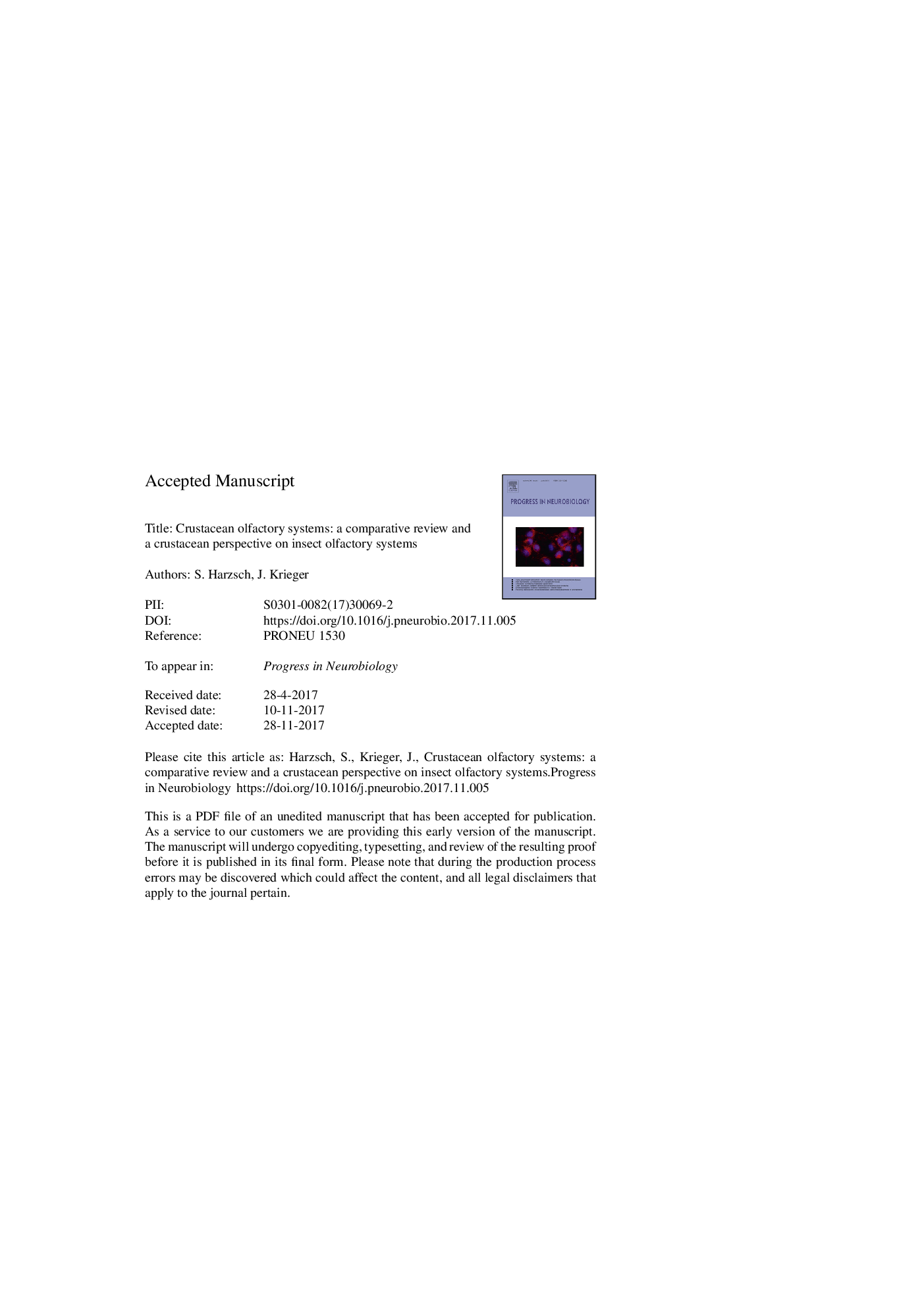| کد مقاله | کد نشریه | سال انتشار | مقاله انگلیسی | نسخه تمام متن |
|---|---|---|---|---|
| 8842192 | 1615354 | 2018 | 83 صفحه PDF | دانلود رایگان |
عنوان انگلیسی مقاله ISI
Crustacean olfactory systems: A comparative review and a crustacean perspective on olfaction in insects
ترجمه فارسی عنوان
سیستم های بوی بد دهان: یک بررسی تطبیقی و یک دیدگاه در مورد خارش در حشرات
دانلود مقاله + سفارش ترجمه
دانلود مقاله ISI انگلیسی
رایگان برای ایرانیان
کلمات کلیدی
OGTCentral bodyMedulla terminalisMalacostracaPancrustaceaLALANNAMPNMPCLoPLPCaesthetascmushroom body - بدن قارچChemical senses - حس های شیمیاییEvolution - فرگشت Lamina - لامیناLAn - لنAntennal lobe - لوب آنتنالOlfactory lobe - لوبالفوسMedulla - مدولاMan - مردICH - منDrosophila - مگس سرکهoch - وOlfactory glomerulus - گلومرول شیریIonotropic receptor - گیرنده ایونوتروپیک
موضوعات مرتبط
علوم زیستی و بیوفناوری
علم عصب شناسی
علوم اعصاب (عمومی)
چکیده انگلیسی
Malacostracan crustaceans display a large diversity of sizes, morphs and life styles. However, only a few representatives of decapod taxa have served as models for analyzing crustacean olfaction, such as crayfish and spiny lobsters. Crustaceans bear multiple parallel chemosensory pathways represented by different populations of unimodal chemosensory and bimodal chemo- and mechanosensory sensilla on the mouthparts, the walking limbs and primarily on their two pairs of antennae. Here, we focus on the olfactory pathway associated with the unimodal chemosensory sensilla on the first antennal pair, the aesthetascs. We explore the diverse arrangement of these sensilla across malacostracan taxa and point out evolutionary transformations which occurred in the central olfactory pathway. We discuss the evolution of chemoreceptor proteins, comparative aspects of active chemoreception and the temporal resolution of crustacean olfactory system. Viewing the evolution of crustacean brains in light of energetic constraints can help us understand their functional morphology and suggests that in various crustacean lineages, the brains were simplified convergently because of metabolic limitations. Comparing the wiring of afferents, interneurons and output neurons within the olfactory glomeruli suggests a deep homology of insect and crustacean olfactory systems. However, both taxa followed distinct lineages during the evolutionary elaboration of their olfactory systems. A comparison with insects suggests their olfactory systems ö especially that of the vinegar fly ö to be superb examples for “economy of design”. Such a comparison also inspires new thoughts about olfactory coding and the functioning of malacostracan olfactory systems in general.
ناشر
Database: Elsevier - ScienceDirect (ساینس دایرکت)
Journal: Progress in Neurobiology - Volume 161, February 2018, Pages 23-60
Journal: Progress in Neurobiology - Volume 161, February 2018, Pages 23-60
نویسندگان
S. Harzsch, J. Krieger,
